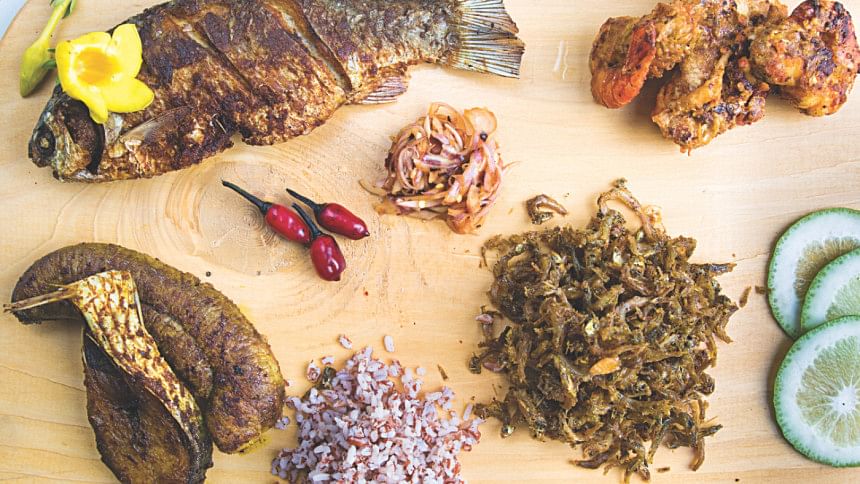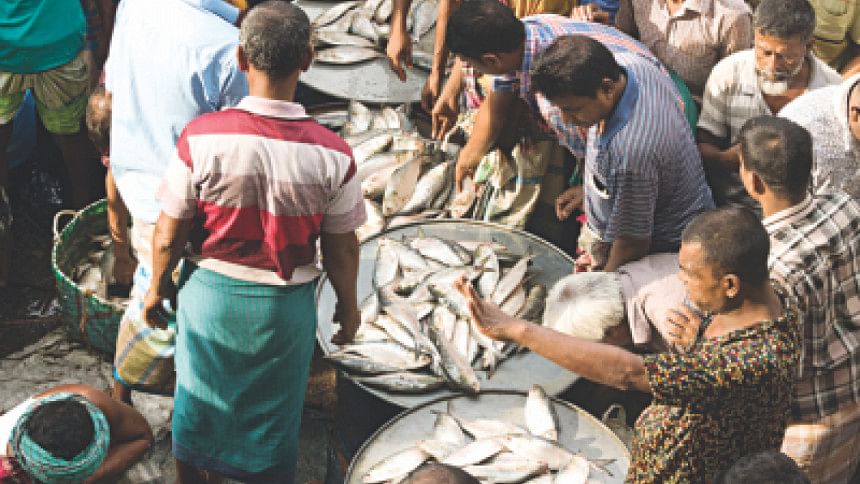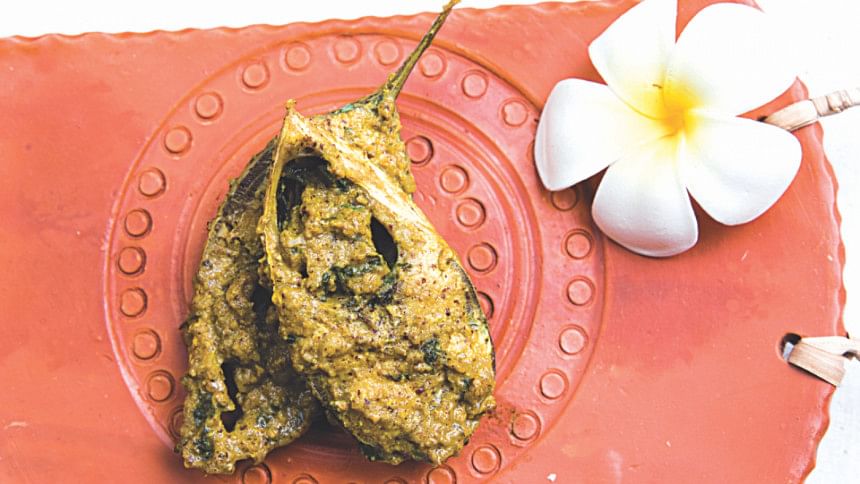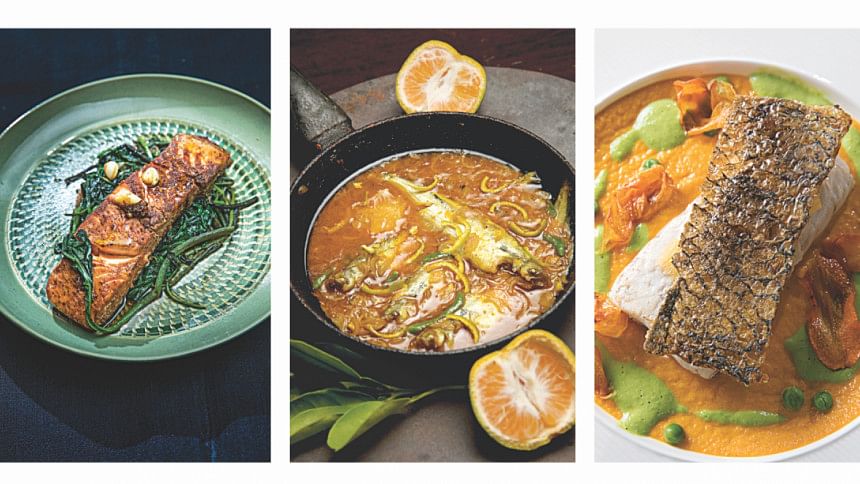The great fish debate: to fry or not before cooking it!

It was the usual hangout. And of course a heated debate began out of the blue. The topic of discussion – is fish tastier when fried before cooking, or should a chef just drop the frying step? A pacifist on the middle path spoke out, just a light frying should go well. To get a picture, in this debate a trio of women were on one side- to cook without frying. And the other poor soul, who was speaking up against them in frying the fish in all its fishy glory is a food-loving male member of the group! Not only is he a food-lover, but a commendable chef as well.
Mirja, the lone frying enthusiast presented his case with fish like Boal (Catfish), Chital (Indian Featherback), Rui (Carp) or Katla (Another type of Carp) that require a slight run in with the oil for a good taste. His opponents just did not stand for it- “to cook these fish after frying is impossible, it will just ruin the taste!” “You don't need to fry fresh fish. The only time that's needed is when you are serving fish that's begun to smell, like the restaurants…” and so on. Then the conversation took turn to how fish is cooked across Bangladesh. The entire hangout, dare I say, was swimming in fish cooking methods. This certainly isn't a new thing though; just about any close-knit group of friends at a table will, one way or another, talk about fish and other related fishy stories!
They say “Mach-e Bhat-e Bangali” (fish and rice make the Bangali) and it is every bit true for the Bangali. There is no family in this country that does not have fish at a meal, whether it's fried or just cooked, as a runny curry or a spicy dopeyaja, the fish is a must. The country is surrounded by numerous rivers, tributaries, wetlands and, the sea; fish is never low in supply here. The key source of protein for the common people is fish. You cannot help but be a fish fan here. Take the numbers for example; 260 types of fresh-water fish, 24 types of prawns and shrimps, 12 more types of foreign fish, and 65 types of sea fish. So if your hangout debates and discussion does not include fish and how to cook it, what are you even talking about?
No Bangali ceremony is complete without fish. In Hindu marriages and in Puja-s, one featured fish item, like a Katla head kaliya or fried pieces of delectable Rui is a must. When Haldi gifts are sent from the groom's house to the bride's house, tradition dictates sending large fish. The new groom, when he visits the in-laws for the first time, is tested based on how many varieties of fish he can buy. In old Dhaka, the new groom is welcomed to his in-law's house with Chengua (a type of snakehead) fish.

There is no end to the interest that the Bangali has for fish. And in cases this 'interest' can get out of hand! Take for example my good friend Belal bhai. Every week he has to take his car to Bhairab Bazar, Mawa ghat, Kishoreganj, or Manikganj. My other friend Julhas Bhai, has three fish sellers on his facebook friends list, they call him up whenever they have a good catch. And Julhas bhai, being who he is, drops everything and runs off to buy those! Then of course he does share some of it with close friends and relatives, this is his one true joy. There are tons of people around, who run from market to market for the hunt of a good, fresh fish. When I and my group of friends go out of the city, we always end up at the local fish market!
The people of Bengal have been fish fans simply because of the sheer number of rivers. All types of fish, big and small, are assets for this country. Just a splash of rain and the children in the rural areas are off fishing.
Rabindranath Tagore's words are the truest description of this 'event':
Shokale bikale kobhu nawa hole pore
Anchole chankiya tara choto mach dhore.
(Each day as their bathing is done
They catch little fish in nets of cloth)
Speaking of fish, one cannot forget Humanyun Ahmed's play, where in the late Shuja Khondokar's voice we heard
“Motsho maribo khaibo shukhe
aha ki anondo lagche buke!”
(My happiness is in catching and eating fish
O joy of joy, my heart is aflush!)
Of course, the feeling may get lost in translation, but Bengali life can't be summarized in any way truer than that!

It's not just the flowing rivers; fish farming in enclosed water bodies has been popular in this sub-continent. Enclosed water bodies include and are not limited to ponds, parts of dead rivers, and coastal shrimp farms. In 1932, the then Director of Fisheries, Sundor Lal Hora, was the first to introduce aquaculture to this region. It was in 1967 that fish farming could finally take off successfully. There was no looking back after that. People and fish production are on the rise, and with that the intake of fish. Previously per person fish intake was 60 grams per day, which is now 62.58 grams per day (Bureau of Statisstics: 2016).
For those who live and breathe fish, just the mere sight of a fish market, or hint of the fishy smell or even the slightest sign of fish being cooked- they are all set for their next meal! They know when to and where great fish is to be found. So here are a handful of tips for those fish lovers, who can make the best use of their chance and have a taste of the catch of the day.
Once after going to Paikgacha for work, I saw shrimp being farmed, and with it large Prashe (mullet). When that shrimp was fished out, and fried with nothing but a touch of salt, that unparalleled taste still lingers. I can never taste something like that in this lifetime, I am just so sure of it. And after the plate full of shrimp, when the Parshe curry arrived, I just had the fish without any care for the rice. Rice and its many variants awaited us through our lives, but not that fish- that was one message I grasped very clearly that day! And if you happen to be the neighbourhood of the Sundarbans, a visit to the road side hotels is a must. The sheer number of fish in this area is staggering. The unforgettable taste is immense from these unnamed small fishes that are hardly seen.
The Jiol from Gopalganj is well known. Shing, Magur, Shol, Baim, Koi, Taki- they all taste simply phenomenal. You can have a fish tour right around winter or end of winter if you head to Gopalganj. And if you ever visit the Haor-Baor of Shunamganj-Habiganj-Kishoreganj, you cannot return without a taste of the fresh fish there. If you want Hilsha, go out on a day trip to Chandpur or Munshiganj for dining and buying.
The Hilsha is the king of all fish in Bangladesh. The increased number is a result of this fish being bred. In 2017, 12 percent of all produced fish was Hilsha. Nearly lost fish – like Puti (puntius), Tengra (Mystus), Rani (Pink Perch), Gutum (Kutum or Loach), Foli (Bronze featherback), Kalibaus (Labeo calbasu), Modhu pabda (a variant of the Ompuk), Kajli (a variety of freshwater catfish) are not so unknown any more as aquaculture is helping to revive them.

As the end of this monologue of my love for fish nears, I want to include a much known anecdote of the poet Nirmalendu Goon. The poet was returning home at the dead of the night by rickshaw once. His long face, his slightly dishevelled getup, with his long moustache and beard made him a suspect to a street cop. Of course that particular law enforcer did not know the poet. And so, as expected, the cop started his list of questions on the poet. Goon, in that situation, took a shiki (an old, nearly forgotten coin valued at 25 paisa, equal to 0.25 taka) out and held it under the light of a nearby lamppost. He asked the police what the picture on it was. The cop answered, “Ilish.” And immediately the poet answered “macher raja elish, aar manusher raja police.” (the king of fish is ilish and the king of man is police- again the imparted rhyme gets lost when translated). As the word goes, the police was so impressed by the rhyme; he let the poet go on his way!
Translated by Iris Farina
Photo: LS Archive/Sazzad Ibne Sayed

 For all latest news, follow The Daily Star's Google News channel.
For all latest news, follow The Daily Star's Google News channel. 



Comments